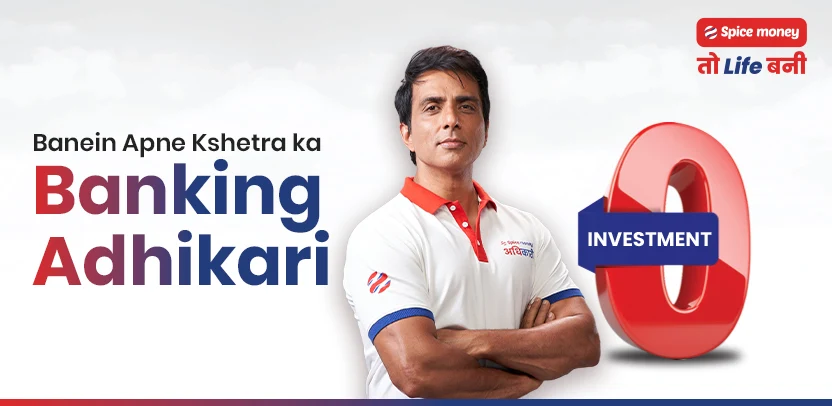In many parts of the country, access to formal financial services remains a challenge due to distance, lack of infrastructure, and limited awareness. To address this gap, the concept of Banking Correspondent India has emerged as a practical approach for delivering basic financial services directly to communities. By establishing service points such as Bank Grahak Seva Kendra and Free Grahak Seva Kendra, residents in rural and semi-urban locations gain access to banking facilities without having to travel long distances. This model promotes financial inclusion, strengthens the rural economy, and ensures that essential transactions can be carried out at the doorstep.

The Role of Banking Correspondent India
A banking correspondent serves as an authorized representative who performs banking transactions on behalf of a financial institution. In the Indian context, this approach has been widely adopted to reach areas where setting up a traditional bank branch is not viable. These representatives, working through service points like Bank Grahak Seva Kendra, help communities open accounts, deposit or withdraw cash, pay bills, and access basic banking products.
The Banking Correspondent India system relies on local individuals or small business owners to act as trusted agents within their community. This trust factor helps in overcoming hesitations that people may have toward formal banking.
Accessibility Through Bank Grahak Seva Kendra
One of the most visible components of this model is the Bank Grahak Seva Kendra. These centers act as small banking outlets operated by correspondents, equipped with necessary technology to connect with the banking network in real time. Residents can use these centers to:
- Open savings or current accounts
- Deposit and withdraw funds
- Transfer money domestically
- Pay utility bills and recharge services
- Access government schemes and subsidies
For many, visiting a Bank Grahak Seva Kendra is far more convenient than traveling to the nearest bank branch. This accessibility improves financial participation, especially for those in remote areas.
Free Grahak Seva Kendra and Cost-Free Services
The introduction of Free Grahak Seva Kendra has further simplified banking for rural customers. These centers offer certain services without additional charges, which helps in encouraging first-time users to explore digital and formal banking options. While not all services are cost-free, the presence of no-fee options attracts individuals who may be hesitant to spend on transaction charges.
Free Grahak Seva Kendra centers often provide:
- Free account opening for eligible customers
- No-cost balance inquiries
- Zero-charge fund transfers within specific limits
- Free updates on account status through SMS alerts
Such initiatives create trust among customers and gradually shift them toward more regular usage of banking facilities.
Technology Integration in Banking Correspondent Model
The success of Banking Correspondent India is closely linked to the use of modern technology. Correspondents are often equipped with biometric devices, card readers, and mobile applications that enable secure transactions. Internet connectivity ensures that transactions are processed instantly, reducing delays and increasing efficiency.
Digital integration also allows for better record-keeping, real-time monitoring, and faster grievance resolution. For customers, this means greater reliability and confidence in the services they receive.
Impact on Financial Inclusion
The presence of Bank Grahak Seva Kendra and Free Grahak Seva Kendra across rural and underserved areas has contributed significantly to financial inclusion. People who previously relied on informal means of saving or borrowing now have access to regulated financial services.
Benefits include:
- Safer savings options compared to keeping money at home
- Access to government subsidies directly into accounts
- Easier bill payments without traveling to urban centers
- Reduced dependency on informal moneylenders
- Encouragement for small savings habits among households
This system also supports rural development by enabling smoother financial transactions for farmers, small traders, and self-employed workers.
Training and Support for Correspondents
For Banking Correspondent India to function effectively, proper training is essential. Correspondents must be knowledgeable about banking procedures, customer handling, and digital security measures. Regular workshops and refresher sessions help maintain service quality and compliance with regulations.
Trained correspondents can assist customers in understanding financial products, filling out forms, and navigating digital banking tools. Their role goes beyond transactions—they also act as guides who educate the community about financial literacy.
Challenges and Areas for Improvement
While the system has been successful in expanding access, certain challenges remain:
- Connectivity issues in remote areas affect transaction speed
- Limited availability of cash at service points during high demand
- Need for better customer awareness about available services
- Training gaps for correspondents in handling complex queries
Addressing these issues can further strengthen the effectiveness of the Banking Correspondent India model.
Future Outlook
The model is expected to grow as demand for doorstep banking increases. Expanding the network of Bank Grahak Seva Kendra and Free Grahak Seva Kendra will allow more communities to access financial services conveniently. With the integration of advanced digital tools, transactions will become even faster and more secure.
In the long term, the role of banking correspondents may also extend to offering micro-loans, insurance products, and investment options tailored to rural needs.
Conclusion
Banking Correspondent India represents a practical approach to ensuring that financial services are accessible to all, regardless of location. Through Bank Grahak Seva Kendra and Free Grahak Seva Kendra, individuals in remote and underserved areas can conduct essential transactions, save securely, and benefit from government programs without the need to travel long distances.
The continued expansion of this model, combined with technology and training, can make doorstep banking a permanent feature in rural financial landscapes. By empowering communities with reliable and accessible services, Banking Correspondent India is set to play a crucial role in building a more inclusive financial future.